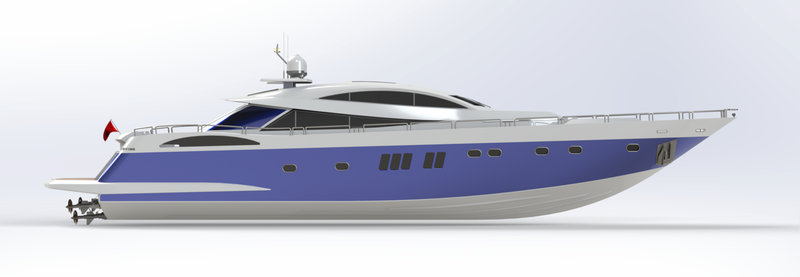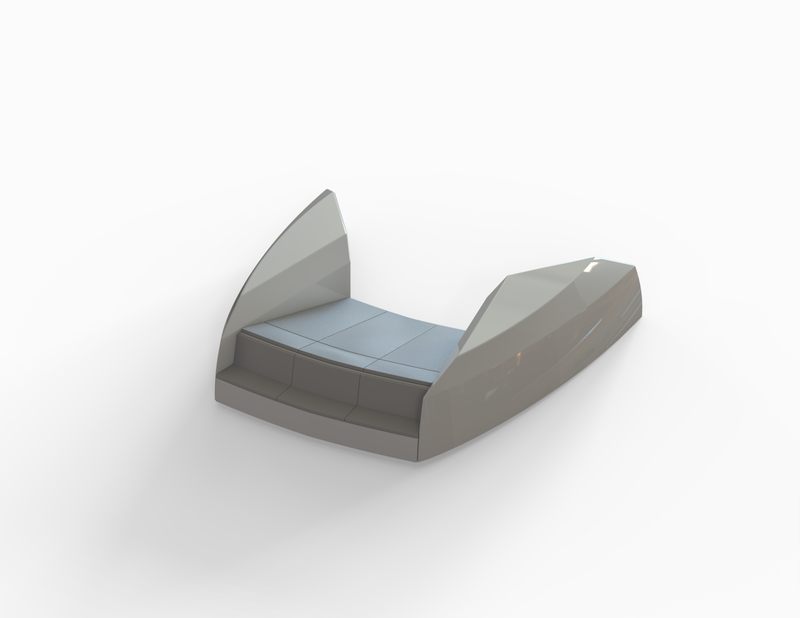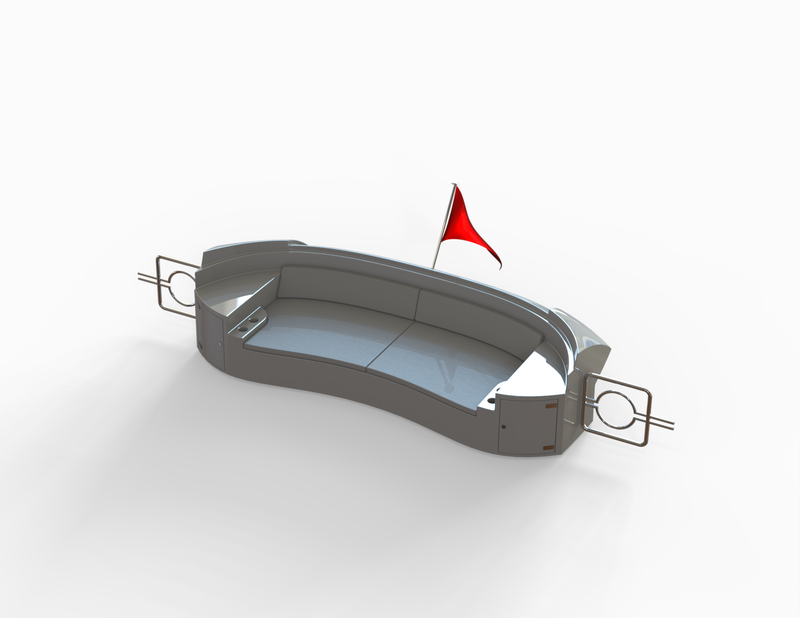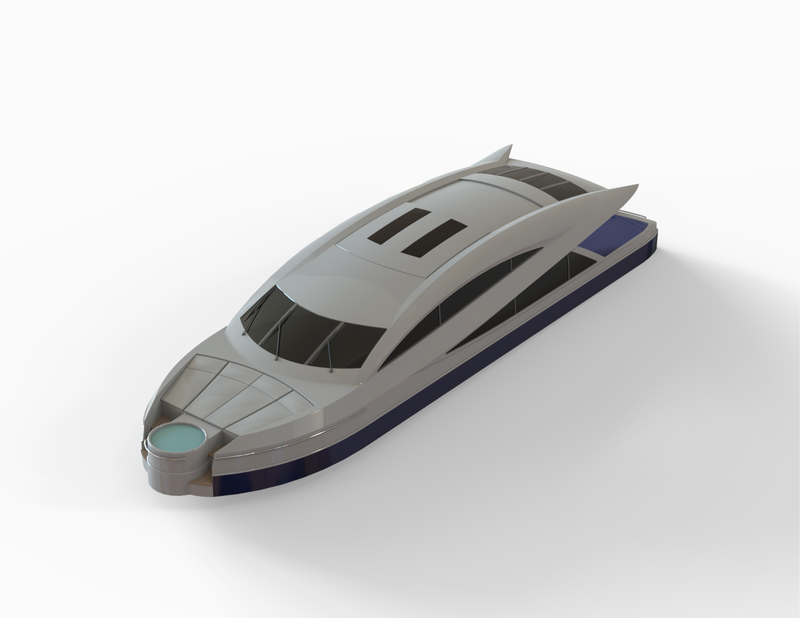Courses by Software
Courses by Semester
Courses by Domain
Tool-focused Courses
Machine learning
POPULAR COURSES
Success Stories
Assembly of Yacht
Sunseeker Predator Yacht - Assembly & Render Objective The objective of this project is solely aimed at applying all surface modelling tools in designing a part(s) and then use the surface as reference to assemble the parts of the Sunseeker Predator Yacht in SolidWorks. Introduction In this project, we…
Hriday Modgil
updated on 25 Dec 2020
Sunseeker Predator Yacht - Assembly & Render
Objective
The objective of this project is solely aimed at applying all surface modelling tools in designing a part(s) and then use the surface as reference to assemble the parts of the Sunseeker Predator Yacht in SolidWorks.
Introduction
In this project, we will design individual parts of the Sunseeker Predator Yacht in SolidWorks by making use of various surface modelling tools combined with solid modelling features, projected curves and reference geometries to eventually mate all the parts using a reference surface to achieve the fully assembled Yacht. All the sketches used to design the Sunseeker Predator Yacht will be constrained with proper dimensional and geometrical constraints enabling us to make any variations during the design process. This technique/approach that we are going to use in this project is called feature-based parametric modelling.
Design Approach
The Parametric feature-based Bottom-up approach has been followed in the modelling of this Sunseeker Predator Yacht. Please refer to the Flowchart below:
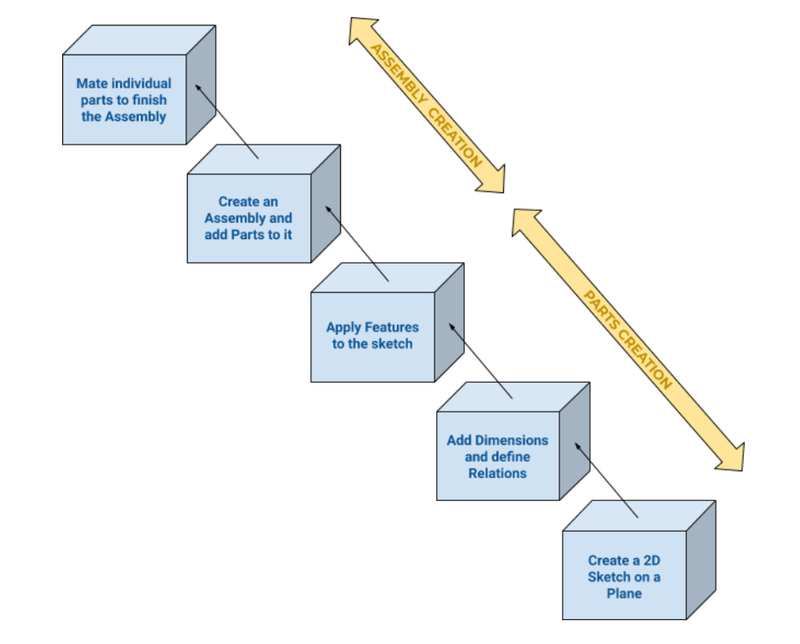
Description
Propeller
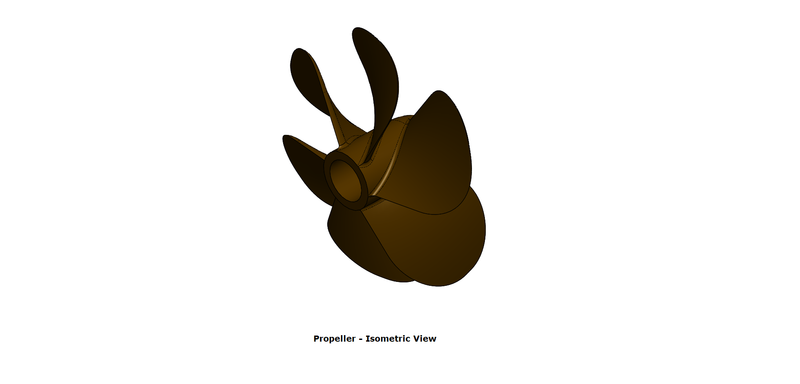
As the name suggests, Propeller is a device which propels (drive or push forward) an object that transforms rotational power into linear thrust by acting upon a working fluid, such as water or air (in this case, water, as we are creating a Propeller for our Yacht). The Sunseeker Predator Yacht will be assembled with three propellers.
Tools/Features used:
- Revolved Boss/Base: To create a solid feature, a sketch or its selected contours are revolved around an axis.
- Lofted Boss/Base: To create a solid feature, it adds material between two or more profiles.
- Fillet: We can apply this as a sketch tool while creating our sketch or as a feature after a 2D sketch is transformed into a 3D feature. It rounds the corner of two sketch entities at their intersection point creating a tangent arc. When applied as a 3D feature (solid/surface), it creates a rounded internal or external face along one or more edges.
- Extruded Cut: This feature extrudes a sketched profile of a solid model to cut it in one or two directions.
- Circular Pattern: It creates a pattern of features, faces and bodies around an axis.
Radar
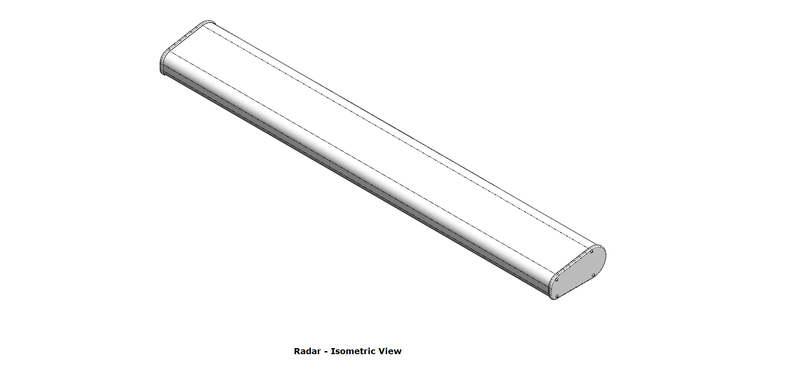
The term Radar was coined as an acronym for ‘Radio Detection And Ranging’. Here we are referring to Marine Radars which are used to detect what objects/obstacles are around, seeing through darkness, precipitation and poor visibility to safely navigate a ship/boat by avoiding collisions. The radar scanner keeps rotating at 360 degrees about its vertical axis and is located at the top of the ship/boat. For our radar, we will also create and add a text on its surface.
Tools/Features used:
- Extruded Boss/Base: This feature extrudes an entire sketch or its selected contours in one or both directions (upto a specified distance which can be altered by the user) to give a desired 3D part.
- Fillet: We can apply this as a sketch tool while creating our sketch or as a feature after a 2D sketch is transformed into a 3D feature. It rounds the corner of two sketch entities at their intersection point creating a tangent arc. When applied as a 3D feature (solid/surface), it creates a rounded internal or external face along one or more edges.
- Extruded Cut: This feature extrudes a sketched profile of a solid model to cut it in one or two directions.
- Sketch Driven Pattern: It creates a pattern of features, faces and bodies based on sketch points.
- Mirror: This can be used as a sketch tool or as a feature. In sketch mode, it mirrors the selected entities about a reference plane or centerline. When used as a feature on a 3D body, it mirrors the features, faces and bodies about a face or a plane.
- Split Line: It projects a sketch to curved or planar faces, creating multiple separate faces.
Hull
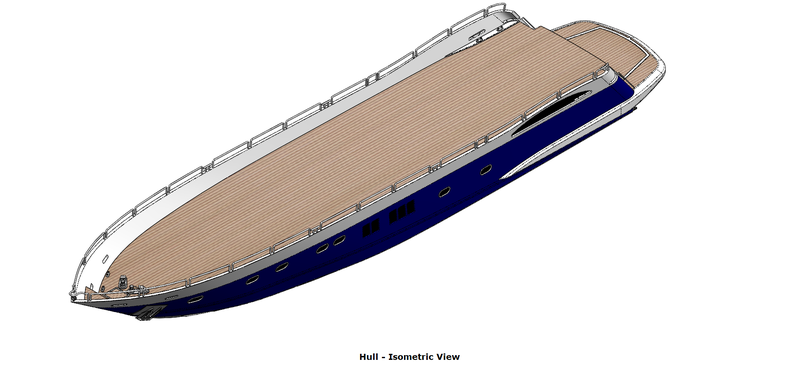
Hull is the watertight enclosure of the watercraft, which protects the cargo, machinery, and accommodation spaces of the watercraft from weather, flooding, and structural damage. The Hull which we will be designing for our Yacht will be fully covered with a deck.
Tools/Features used:
- Projected Curve: Projects a sketched curve onto a face or sketch.
- Lofted Surface: Creates a lofted surface between two or more profiles.
- Trim Surface: Trims a surface where one surface intersects with another surface, a plane, or a sketch.
- Extruded Surface: Creates an extruded surface from the sketch.
- Knit Surface: Combines two or more adjacent, non-intersecting surfaces together.
- Filled Surface: Constructs a surface patch within a boundary defined by existing model edges, sketches, or curves.
- Shell: A thin-walled feature is created using Shell which removes material from the selected solid body.
- Extruded Boss/Base: This feature extrudes an entire sketch or its selected contours in one or both directions (upto a specified distance which can be altered by the user) to give a desired 3D part.
- Extruded Cut: This feature extrudes a sketched profile of a solid model to cut it in one or two directions.
- Fillet: We can apply this as a sketch tool while creating our sketch or as a feature after a 2D sketch is transformed into a 3D feature. It rounds the corner of two sketch entities at their intersection point creating a tangent arc. When applied as a 3D feature (solid/surface), it creates a rounded internal or external face along one or more edges.
- Chamfer: We can apply this as a sketch tool while creating our sketch or as a feature after a 2D sketch is transformed into a 3D feature. It creates a transitional edge at the intersection of two sketch entities when used as a sketch tool. When used as a feature, it creates a bevel feature along an edge or a vertex.
- Plane: A reference plane is added based on the selection of references as per the requirement of our sketch.
- Swept Boss/Base: Sweeps a closed profile along an open or closed path to create a solid feature.
- Revolved Boss/Base: To create a solid feature, a sketch or its selected contours are revolved around an axis.
- Dome: This creates a dome shape to the selected face(s) (planar/non-planar).
- Helix and Spiral: Adds a helix or spiral curve from a sketched surface.
- Linear Pattern: It creates a pattern of features, faces and bodies in one or two linear directions.
- 3D Sketch: Creates a new sketch in 3D space.
- Mirror: This can be used as a sketch tool or as a feature. In sketch mode, it mirrors the selected entities about a reference plane or centerline. When used as a feature on a 3D body, it mirrors the features, faces and bodies about a face or a plane.
- Split Line: It projects a sketch to curved or planar faces, creating multiple separate faces.
Garage Door
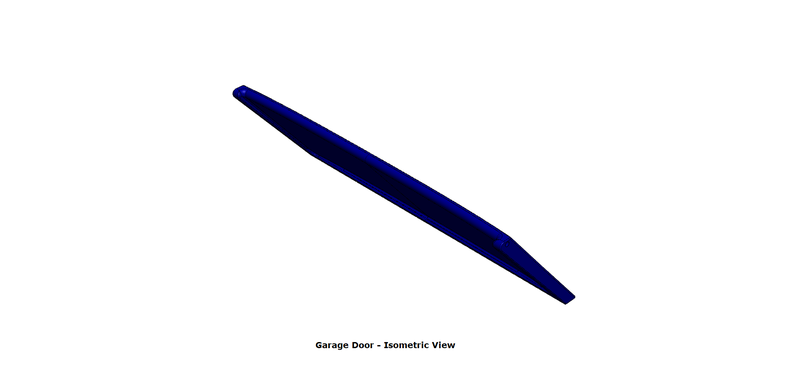
This will be a hydraulic door covering the garage on our Yacht. We will also create and add a text on the surface of the Garage Door.
Tools/Features used:
- Extruded Cut: This feature extrudes a sketched profile of a solid model to cut it in one or two directions.
- Shell: A thin-walled feature is created using Shell which removes material from the selected solid body.
- Fillet: We can apply this as a sketch tool while creating our sketch or as a feature after a 2D sketch is transformed into a 3D feature. It rounds the corner of two sketch entities at their intersection point creating a tangent arc. When applied as a 3D feature (solid/surface), it creates a rounded internal or external face along one or more edges.
- Mirror: This can be used as a sketch tool or as a feature. In sketch mode, it mirrors the selected entities about a reference plane or centerline. When used as a feature on a 3D body, it mirrors the features, faces and bodies about a face or a plane.
- Plane: A reference plane is added based on the selection of references as per the requirement of our sketch.
Front Seat

The Front Seat is designed in such a way that it adds to the aesthetic detail of our Yacht.
Tools/Features used:
- Plane: A reference plane is added based on the selection of references as per the requirement of our sketch.
- Swept Surface: Creates a surface feature by sweeping an open or closed profile along an open or closed path.
- Extruded Surface: Creates an extruded surface from the sketch.
- Trim Surface: Trims a surface where one surface intersects with another surface, a plane, or a sketch.
- Filled Surface: Constructs a surface patch within a boundary defined by existing model edges, sketches, or curves.
- Lofted Surface: Creates a lofted surface between two or more profiles.
- Knit Surface: Combines two or more adjacent, non-intersecting surfaces together.
- Chamfer: We can apply this as a sketch tool while creating our sketch or as a feature after a 2D sketch is transformed into a 3D feature. It creates a transitional edge at the intersection of two sketch entities when used as a sketch tool. When used as a feature, it creates a bevel feature along an edge or a vertex.
- Revolved Boss/Base: To create a solid feature, a sketch or its selected contours are revolved around an axis.
- Extruded Cut: This feature extrudes a sketched profile of a solid model to cut it in one or two directions.
- Fillet: We can apply this as a sketch tool while creating our sketch or as a feature after a 2D sketch is transformed into a 3D feature. It rounds the corner of two sketch entities at their intersection point creating a tangent arc. When applied as a 3D feature (solid/surface), it creates a rounded internal or external face along one or more edges.
- Mirror: This can be used as a sketch tool or as a feature. In sketch mode, it mirrors the selected entities about a reference plane or centerline. When used as a feature on a 3D body, it mirrors the features, faces and bodies about a face or a plane.
- Dome: This creates a dome shape to the selected face(s) (planar/non-planar).
Middle Seat
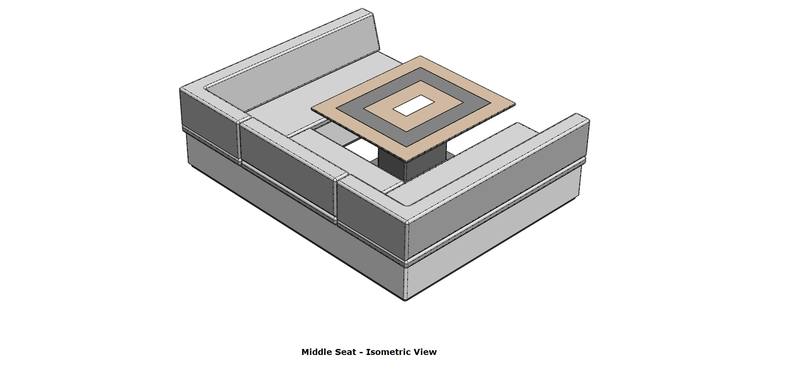
As depicted in the visual above, the Middle Seat comprises cushioned seating around a table.
Tools/Features used:
- Extruded Boss/Base: This feature extrudes an entire sketch or its selected contours in one or both directions (upto a specified distance which can be altered by the user) to give a desired 3D part.
- Plane: A reference plane is added based on the selection of references as per the requirement of our sketch.
- Chamfer: We can apply this as a sketch tool while creating our sketch or as a feature after a 2D sketch is transformed into a 3D feature. It creates a transitional edge at the intersection of two sketch entities when used as a sketch tool. When used as a feature, it creates a bevel feature along an edge or a vertex.
- Fillet: We can apply this as a sketch tool while creating our sketch or as a feature after a 2D sketch is transformed into a 3D feature. It rounds the corner of two sketch entities at their intersection point creating a tangent arc. When applied as a 3D feature (solid/surface), it creates a rounded internal or external face along one or more edges.
- Mirror: This can be used as a sketch tool or as a feature. In sketch mode, it mirrors the selected entities about a reference plane or centerline. When used as a feature on a 3D body, it mirrors the features, faces and bodies about a face or a plane.
Rear Seat
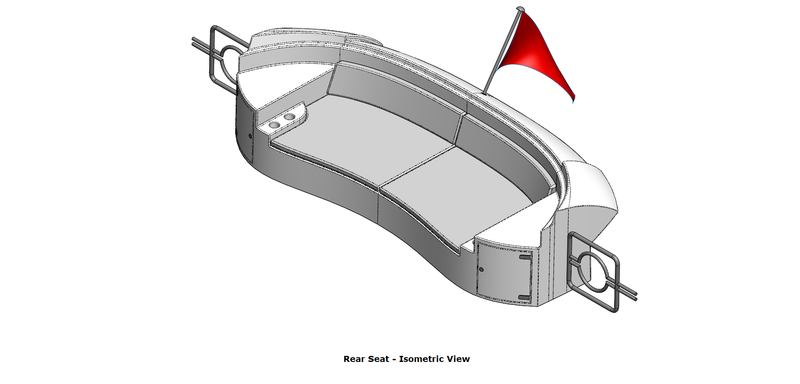
Tools/Features used:
- Plane: A reference plane is added based on the selection of references as per the requirement of our sketch.
- Swept Surface: Creates a surface feature by sweeping an open or closed profile along an open or closed path.
- Offset Surface: Creates offset surfaces using one or more adjoining faces.
- Trim Surface: Trims a surface where one surface intersects with another surface, a plane, or a sketch.
- Ruled Surface: Inserts ruled surfaces from edges.
- Knit Surface: Combines two or more adjacent, non-intersecting surfaces together.
- Lofted Surface: Creates a lofted surface between two or more profiles.
- Extruded Surface: Creates an extruded surface from the sketch.
- Extend Surface: Extends the edge, multiple edges or the face on a surface, based on end conditions and extension type.
- Combine: This feature combines two or more solid bodies together.
- Extruded Cut: This feature extrudes a sketched profile of a solid model to cut it in one or two directions.
- Chamfer: We can apply this as a sketch tool while creating our sketch or as a feature after a 2D sketch is transformed into a 3D feature. It creates a transitional edge at the intersection of two sketch entities when used as a sketch tool. When used as a feature, it creates a bevel feature along an edge or a vertex.
- Extruded Boss/Base: This feature extrudes an entire sketch or its selected contours in one or both directions (upto a specified distance which can be altered by the user) to give a desired 3D part.
- Fillet: We can apply this as a sketch tool while creating our sketch or as a feature after a 2D sketch is transformed into a 3D feature. It rounds the corner of two sketch entities at their intersection point creating a tangent arc. When applied as a 3D feature (solid/surface), it creates a rounded internal or external face along one or more edges.
- Mirror: This can be used as a sketch tool or as a feature. In sketch mode, it mirrors the selected entities about a reference plane or centerline. When used as a feature on a 3D body, it mirrors the features, faces and bodies about a face or a plane.
- Revolved Boss/Base: To create a solid feature, a sketch or its selected contours are revolved around an axis.
Superstructure

Superstructure means to add a construction to an already existing structure. In ships, this is the name given to the part of the ship that emerges from the deck.
Tools/Features used:
- Extruded Surface: Creates an extruded surface from the sketch.
- Plane: A reference plane is added based on the selection of references as per the requirement of our sketch.
- Swept Surface: Creates a surface feature by sweeping an open or closed profile along an open or closed path.
- Knit Surface: Combines two or more adjacent, non-intersecting surfaces together.
- Fillet: We can apply this as a sketch tool while creating our sketch or as a feature after a 2D sketch is transformed into a 3D feature. It rounds the corner of two sketch entities at their intersection point creating a tangent arc. When applied as a 3D feature (solid/surface), it creates a rounded internal or external face along one or more edges.
- Ruled Surface: Inserts ruled surfaces from edges.
- Trim Surface: Trims a surface where one surface intersects with another surface, a plane, or a sketch.
- Projected Curve: Projects a sketched curve onto a face or sketch.
- Lofted Surface: Creates a lofted surface between two or more profiles.
- Filled Surface: Constructs a surface patch within a boundary defined by existing model edges, sketches, or curves.
- 3D Sketch: Creates a new sketch in 3D space.
- Extend Surface: Extends the edge, multiple edges or the face on a surface, based on end conditions and extension type.
- Extruded Boss/Base: This feature extrudes an entire sketch or its selected contours in one or both directions (upto a specified distance which can be altered by the user) to give a desired 3D part.
- Extruded Cut: This feature extrudes a sketched profile of a solid model to cut it in one or two directions.
- Delete Face: Deletes faces from solid bodies to create surfaces, or deletes faces from surface bodies.
- Offset Surface: Creates offset surfaces using one or more adjoining faces.
- Thicken: Creates a solid feature by thickening one or more adjacent surfaces which are already knit.
- Dome: This creates a dome shape to the selected face(s) (planar/non-planar).
- Split Line: It projects a sketch to curved or planar faces, creating multiple separate faces.
- Mirror: This can be used as a sketch tool or as a feature. In sketch mode, it mirrors the selected entities about a reference plane or centerline. When used as a feature on a 3D body, it mirrors the features, faces and bodies about a face or a plane.
- Chamfer: We can apply this as a sketch tool while creating our sketch or as a feature after a 2D sketch is transformed into a 3D feature. It creates a transitional edge at the intersection of two sketch entities when used as a sketch tool. When used as a feature, it creates a bevel feature along an edge or a vertex.
- Split: This feature creates multiple bodies from a single body.
Radar Mast
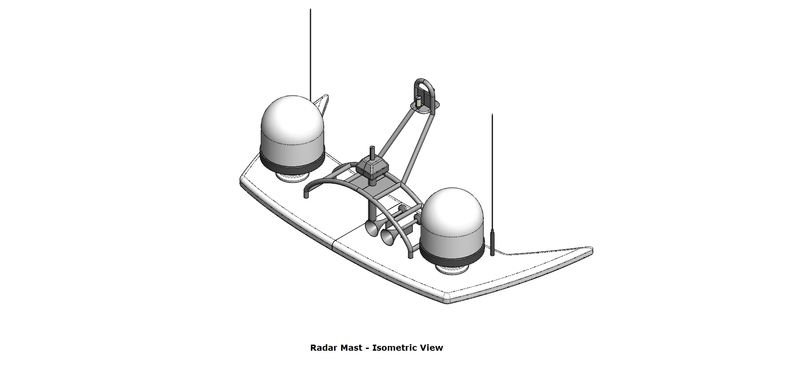
The Radar Mast is a tall pole that holds up the radar on a ship/boat. It consists of a housing that accommodates all major radars, sensors and antennas.
Tools/Features used:
- Plane: A reference plane is added based on the selection of references as per the requirement of our sketch.
- Extruded Boss/Base: This feature extrudes an entire sketch or its selected contours in one or both directions (upto a specified distance which can be altered by the user) to give a desired 3D part.
- Fillet: We can apply this as a sketch tool while creating our sketch or as a feature after a 2D sketch is transformed into a 3D feature. It rounds the corner of two sketch entities at their intersection point creating a tangent arc. When applied as a 3D feature (solid/surface), it creates a rounded internal or external face along one or more edges.
- Revolved Boss/Base: To create a solid feature, a sketch or its selected contours are revolved around an axis.
- Swept Boss/Base: Sweeps a closed profile along an open or closed path to create a solid feature.
- Mirror: This can be used as a sketch tool or as a feature. In sketch mode, it mirrors the selected entities about a reference plane or centerline. When used as a feature on a 3D body, it mirrors the features, faces and bodies about a face or a plane.
- Projected Curve: Projects a sketched curve onto a face or sketch.
- Chamfer: We can apply this as a sketch tool while creating our sketch or as a feature after a 2D sketch is transformed into a 3D feature. It creates a transitional edge at the intersection of two sketch entities when used as a sketch tool. When used as a feature, it creates a bevel feature along an edge or a vertex.
- Dome: This creates a dome shape to the selected face(s) (planar/non-planar).
- Shell: A thin-walled feature is created using Shell which removes material from the selected solid body.
Assembly Model View Images
Front View
Left Side View
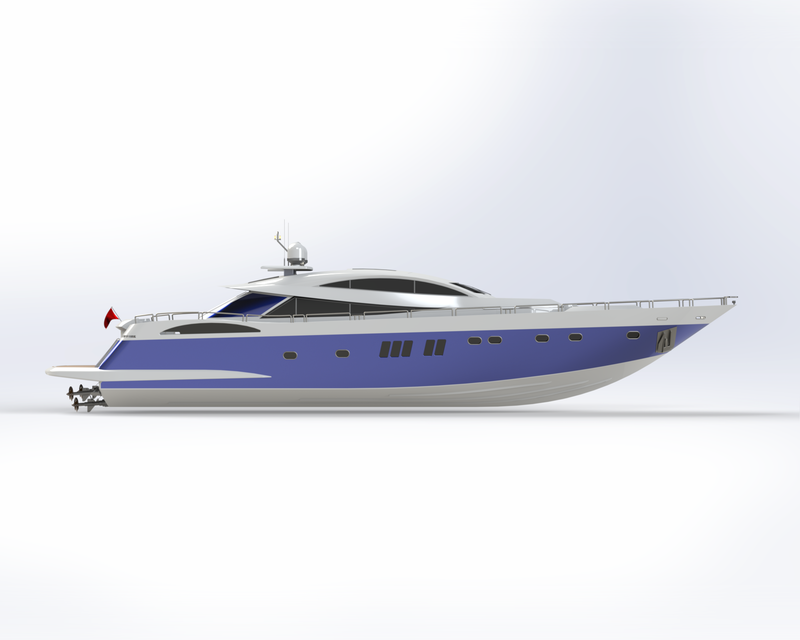
Right Side View
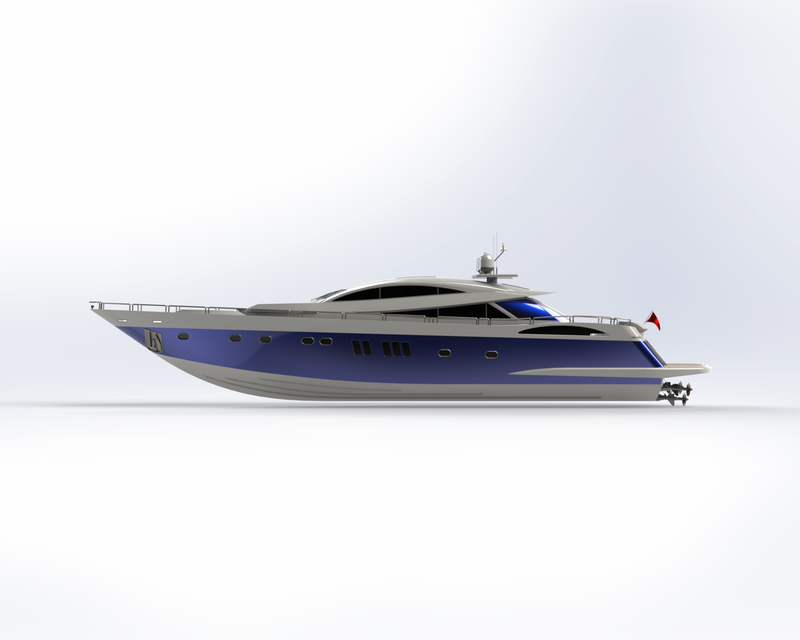
Isometric View

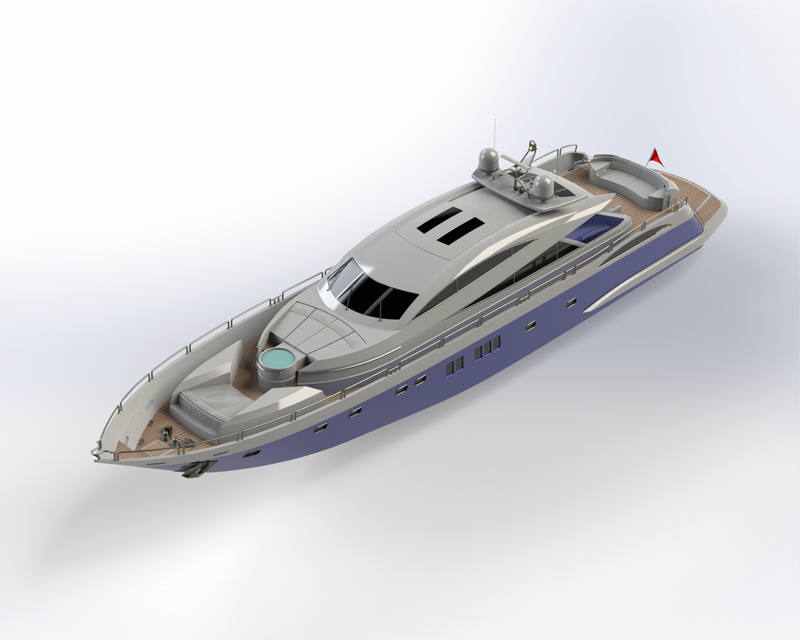
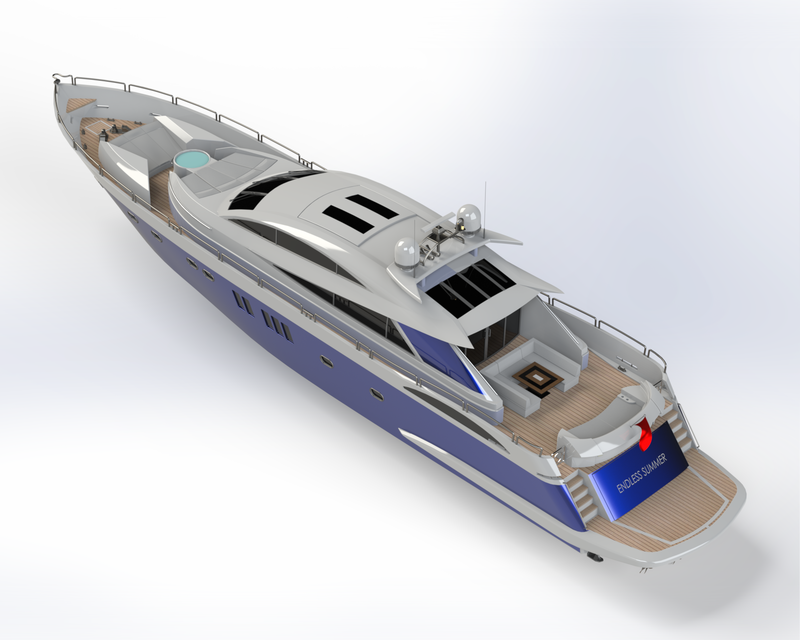

Top View
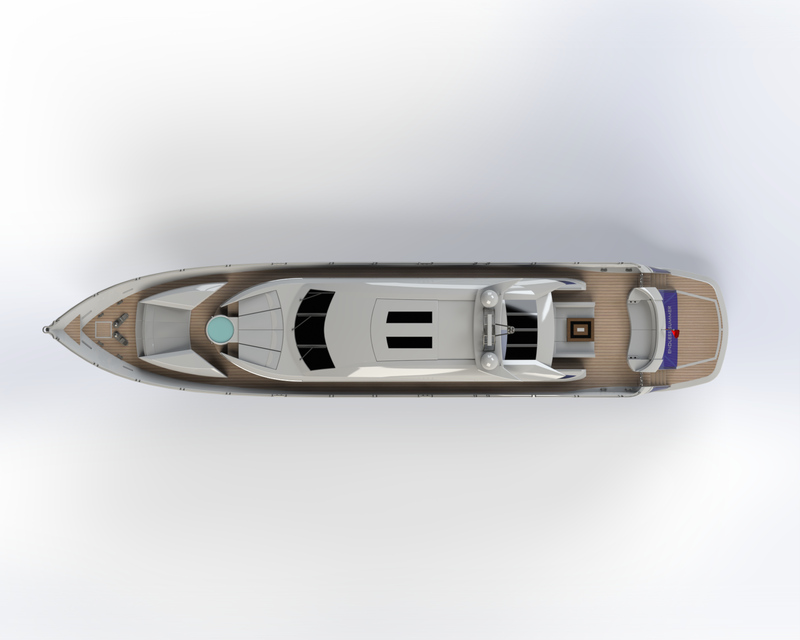
Back View
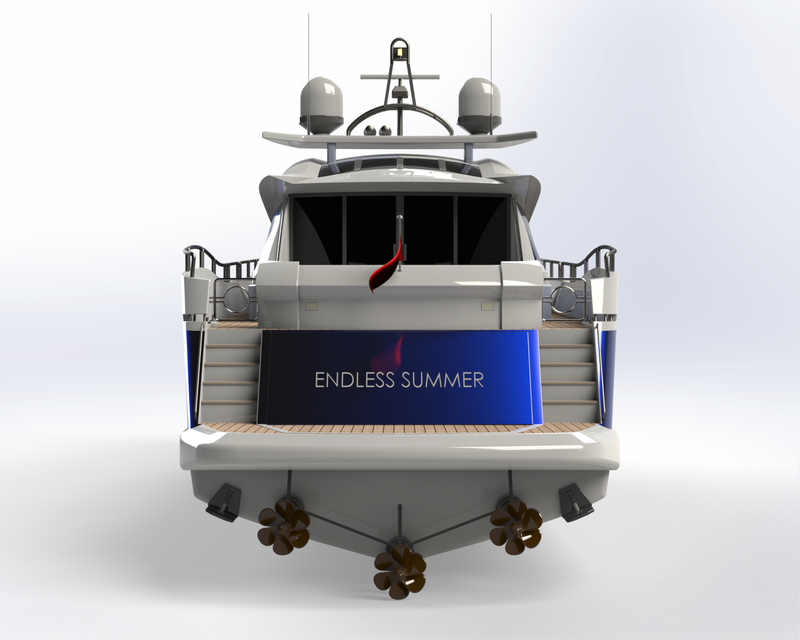
Camera Setup

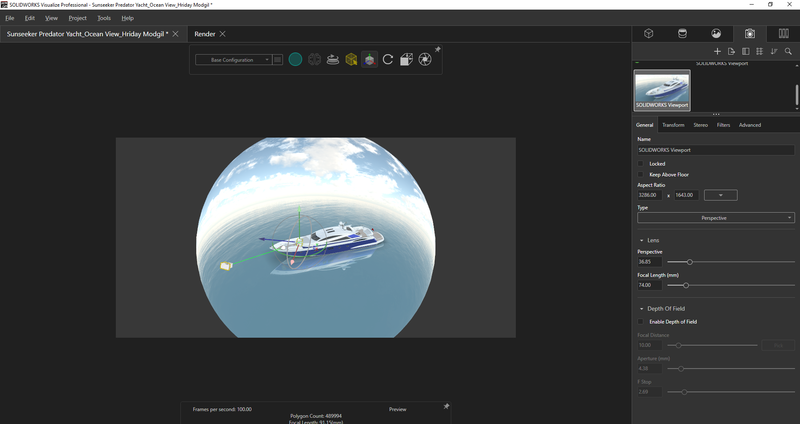
Rendered Images - Individual Parts
Propeller

Radar

Hull
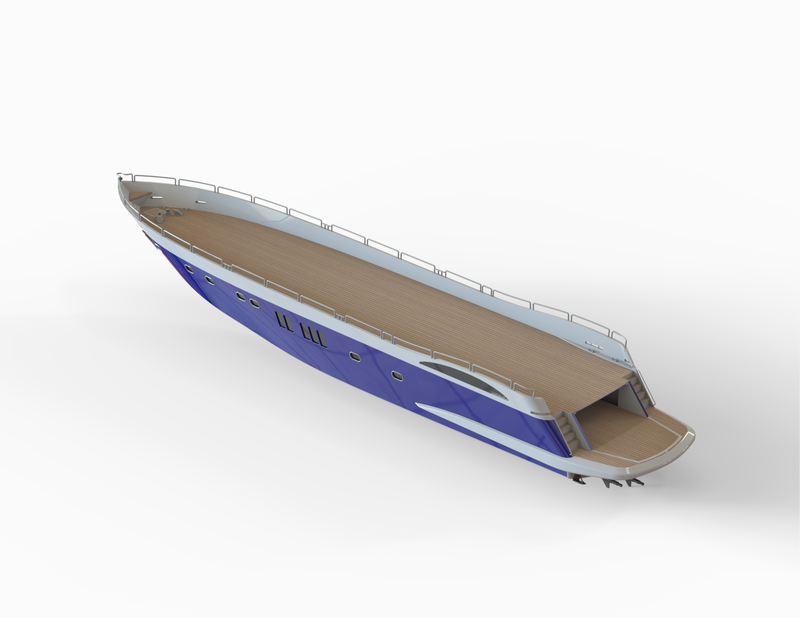
Garage Door
Front Seat
Middle Seat
Rear Seat
Superstructure
Radar Mast

Rendered Images - Assembly Model
Final Render - Sunseeker Predator Yacht
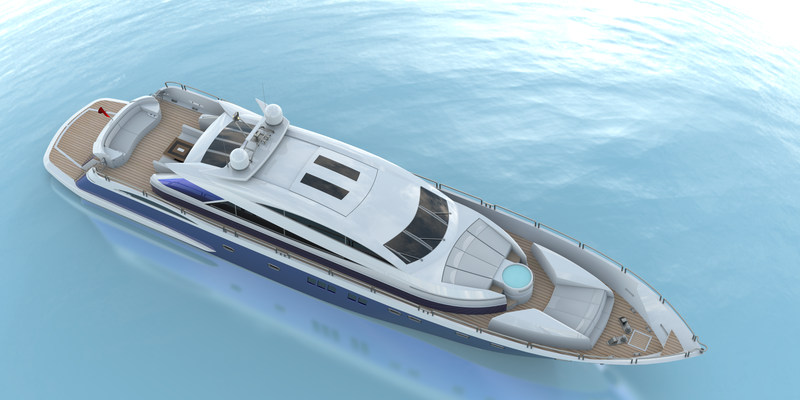
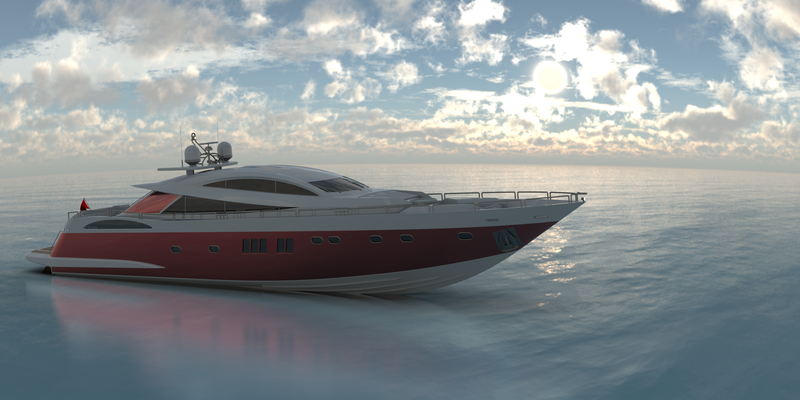

Conclusion
The practical training on the entire exercise explained above could facilitate us to understand the basic concepts of surface modelling and assembly modelling using a surface as a reference to design the Sunseeker Predator Yacht IN SolidWorks. We used SolidWorks Visualize to generate the final renders of this Sunseeker Predator Yacht. Some tweaks with the object orientation, HDR environment, backplate adjustments, brightness and gamma level, shadows, reflections, scale, adding realistic appearances for different parts of the Yacht and the result was crisp and realistic images for the final renders.
Leave a comment
Thanks for choosing to leave a comment. Please keep in mind that all the comments are moderated as per our comment policy, and your email will not be published for privacy reasons. Please leave a personal & meaningful conversation.
Other comments...
Be the first to add a comment
Read more Projects by Hriday Modgil (3)
Football Cube on Wheels
Football Cube on Wheels - Final Project Objective The objective of this SolidWorks Project titled “Football Cube on Wheels” is to design a Trailer Truck with a cubical machine called F-Cube (related to Football), mounted on its Trailer. The idea has been taken from my past job experience where…
30 Jan 2021 09:50 AM IST
Assembly of Yacht
Sunseeker Predator Yacht - Assembly & Render Objective The objective of this project is solely aimed at applying all surface modelling tools in designing a part(s) and then use the surface as reference to assemble the parts of the Sunseeker Predator Yacht in SolidWorks. Introduction In this project, we…
25 Dec 2020 08:29 PM IST
Photo Realistic Rendering
The American Chopper - Assembly & Render Objective To learn the concepts of part modelling and assembly modelling for designing The American Chopper in SolidWorks and also to learn basic concepts of photo-realistic rendering to generate a render of the designed Chopper in SolidWorks Visualize. Introduction In…
30 Oct 2020 02:41 PM IST
Related Courses
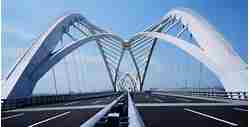


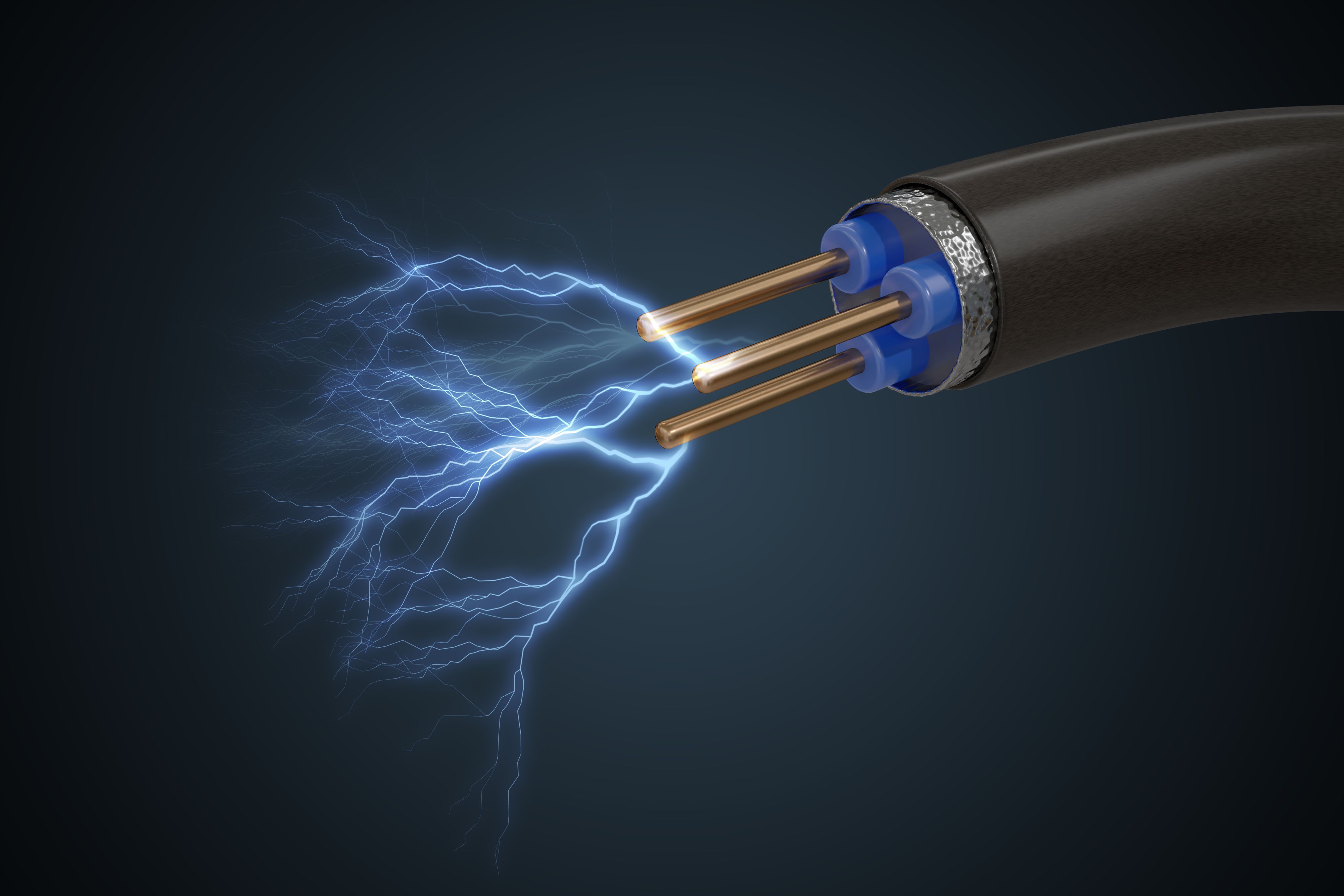
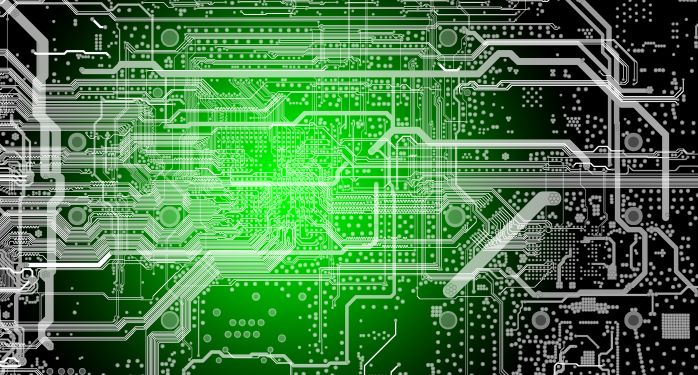

0 Hours of Content

Skill-Lync offers industry relevant advanced engineering courses for engineering students by partnering with industry experts.
Our Company
4th Floor, BLOCK-B, Velachery - Tambaram Main Rd, Ram Nagar South, Madipakkam, Chennai, Tamil Nadu 600042.
Top Individual Courses
Top PG Programs
Skill-Lync Plus
Trending Blogs
© 2025 Skill-Lync Inc. All Rights Reserved.




